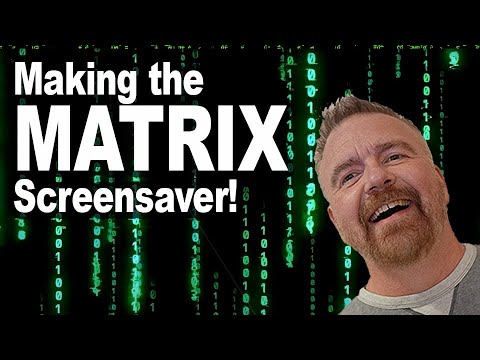In the video, Dave creates a Matrix screensaver on his vintage PDP-11/83 mini computer running BSD Unix, sharing his journey of restoring the hardware and coding the screensaver using VT220 control sequences. He also demonstrates additional visual effects, including a sine wave animation, a blinking star effect, and Conway’s Game of Life, while encouraging viewer engagement and promoting his book and podcast.
In the video, the host, Dave, embarks on a project to create a modern screensaver, specifically a version of The Matrix screensaver, on his vintage PDP-11/83 mini computer running BSD Unix. He shares his journey of restoring the PDP-11, detailing the challenges he faced in assembling the necessary hardware and software components. Dave reflects on his passion for old computers and how he prefers to run a Unix environment, which aligns more closely with his current experience, especially given his background with Linux and macOS, both of which have roots in BSD.
Dave explains the significance of the VT220 terminals connected to his PDP-11, emphasizing their unique capabilities and his fondness for them. He recalls his college project involving a PDP-1 and how programming for serial terminals presents unique challenges due to their limitations in screen manipulation. The video highlights the use of VT220 control sequences, which allow for cursor movement and screen manipulation, enabling the creation of visual effects despite the constraints of the terminal’s data rate.
The main focus of the video is the development of the Matrix screensaver. Dave demonstrates how he coded the screensaver, explaining the logic behind the trails of characters that mimic the iconic visual from the film. He discusses the technical aspects of the program, including how trails are generated, updated, and displayed on the terminal screen. The video showcases the screensaver in action, illustrating how the persistence of the phosphor on the monitor creates a visually appealing effect.
In addition to the Matrix screensaver, Dave shares his experience creating three other visual effects: a sine wave animation, a blinking star effect, and an implementation of Conway’s Game of Life. He describes the coding process for each effect, highlighting the simplicity and creativity involved in programming for the PDP-11. While the Game of Life doesn’t perform as compellingly due to the slow frame rate, Dave remains open to suggestions for improving it.
Throughout the video, Dave encourages viewers to engage with his content by liking and subscribing, while also promoting his book on living with autism and his podcast, “Shop Talk.” He expresses gratitude to his audience for their support and invites them to share their thoughts on the projects he undertakes. The video concludes with Dave’s hope to continue sharing his retro coding adventures and the joy of working with vintage technology.
